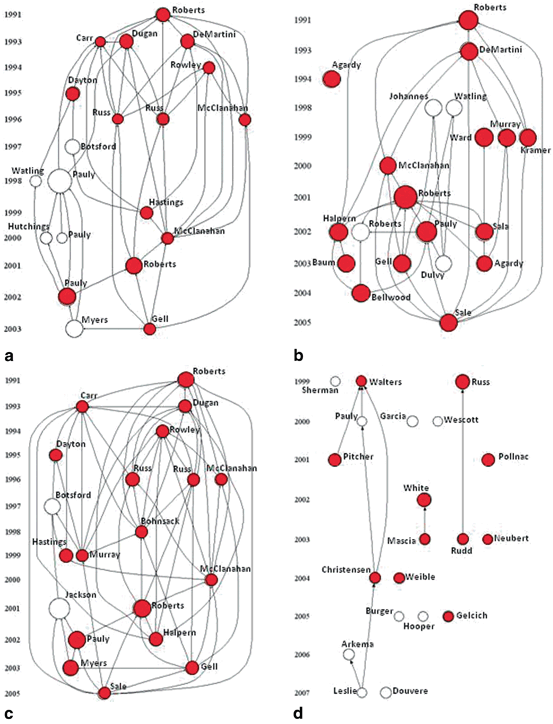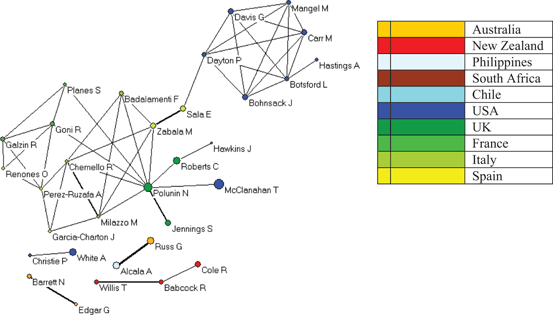Bibliometric Test of the MR ‘Bandwagon’

Database
Search term used to source data from WoS
Number of records (end 2010)
Percentage of shared records with search X
Total GCS of database
Mean GCS per article
X
Marine and (‘marine reserve’…)
5294
n/a
79,059
14.9
N1
Marine and fisher
6691
22.83 %
86,384
12.9
N2
Marine and conservation
3784
29.92 %
58,452
15.4
N3
Marine and management
8077
24.65 %
90,959
11.3
N4
Marine and policy
1143
17.13 %
12,888
11.3
3.3 Results and Discussion
It is important to identify the members of the scientific community who had published most extensively on MRs up until the end of the twentieth century. The structure of the coauthor network shows two sub-networks consisting of scientists from the USA and Europe (see Fig. 3.1), members of the former being particularly influential in the numbers of both publications and citations (Caveen et al. 2013). Influential institutions include National Oceanographic and Atmospheric Administration (NOAA), James Cook University, and the University of Auckland. Regarding the academic impact of individual scientists, TR McClanahan has the greatest number of publications; CM Roberts has the greatest LCS; and NVC Polunin has the greatest centrality scores for both closeness and betweenness. The network consisted mainly of scientists who would best be described as marine ecologists. Only two social scientists, A White (The Nature Conservancy, USA) and P Christie (University of Washington, USA) whose work focused more on the social aspects of marine resource management, had sufficient publications to be included in it.

Fig. 3.1
Coauthor network of the most productive authors in MR science from 1970 to 2000 (n = 32). Vertex size indicates the relative number of publications for an author and edge width the number of times an author has collaborated. Vertex colour indicates author nationality
With respect to the dissemination of knowledge, the most published-in journals included the Bulletin of Marine Science (which published a special issue on MPAs in 2000 on their role in the protection of essential fish habitat), and Marine Ecology Progress Series (MEPS). The most studied MPAs were all MRs, mainly located over tropical coral reefs (Leigh, NE New Zealand being the exception). Importantly, such studies are amongst the most highly cited in the MPA literature (see Fig. 3.2). It is reasonable to assume that these highly cited studies have influenced public discourse on MPAs (see Chap. 1